A stood up Wade fork
We are no longer building saddle trees, but we have two videos about how Western saddles fit horses available on our westernsaddlefit.com website.
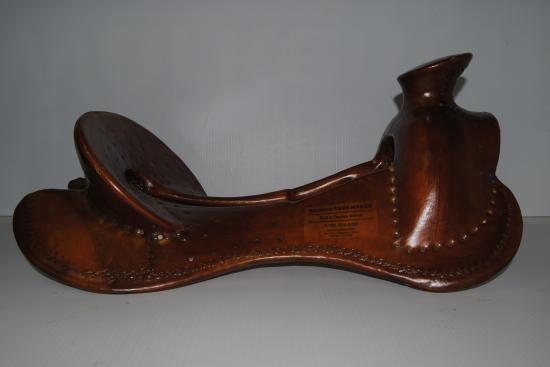
We shipped this one out a little bit ago. This is a normal Wade fork but rather than being at the normal leaned ahead angle, it is stood up. We have built some of these over the years, mostly for two particular customers who prefer this look to their Wades, but a few for other people.
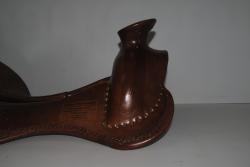 |
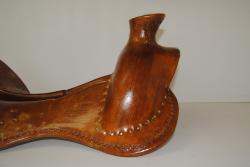 |
To let you see the difference in the two angles, here are two trees with the same specs: 9” wide Wade forks, 5” stock thickness, with 3” tall, 4” cap horns at a 24 degree pitch. You can see the obvious angle difference on the forks. You can also see the different pitch on the horn relative to the table despite the same designation of a 24 degree pitch on the horn. This is because that measurement is taken relative to the fork, and when you stand the fork up, the horn tilts up more too. A 24 degree pitch on a leaned ahead fork is fairly flat.
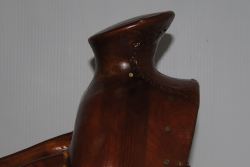 |
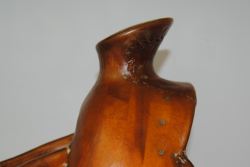 |
With a stood up fork, the 24 degree pitch ends up being similar to a 30 degree pitch on a leaned ahead fork, as seen in the picture on the right. We compensate for this difference by dropping the pitch on a stood up fork to get equivalent pitches. This is something we check out with customers if they order wood post horns on stood up forks so they know what they are going to get. Do they want an X degree equivalent or a real X degree pitch? That is where the pictures on our Wood Post Horn pages come in handy so people can see what they really look like.
The other thing that standing a fork up could do is change the fit for the horse – unless we compensate, which we do. Due to basic geometry, as the fork gets straighter up, the bottom of the bars get closer together (with nothing else changing), effectively decreasing the bar angle. This is one of the reasons you can’t compare fit between makers based just on the measurements. This concept is explained more fully, and other reasons are discussed as well, in our Bar Angles, Why the Numbers are Meaningless Between Makers page. When we stand up a fork, we don’t even discuss equivalency with our customers. We just make the changes needed so a stood up fork will fit the same as a leaned ahead fork for the same “fit” specs. Life is just a lot simpler that way.
